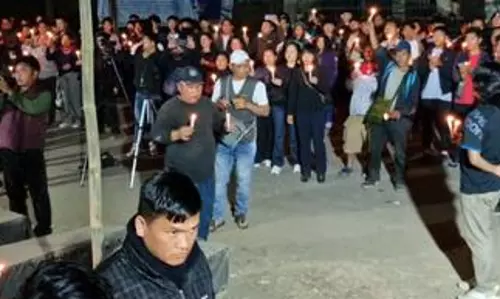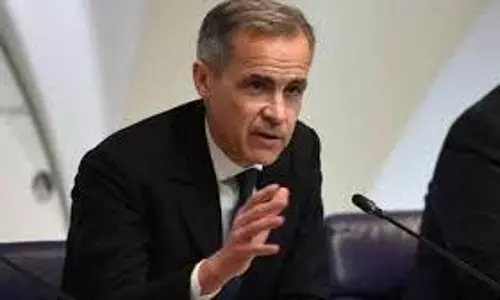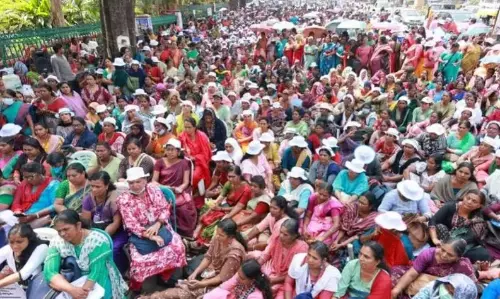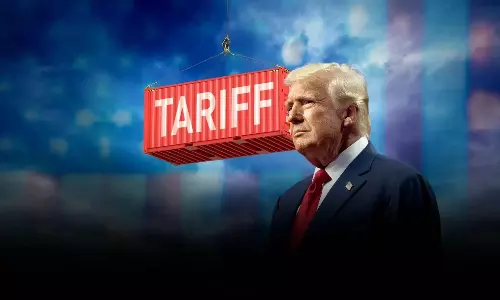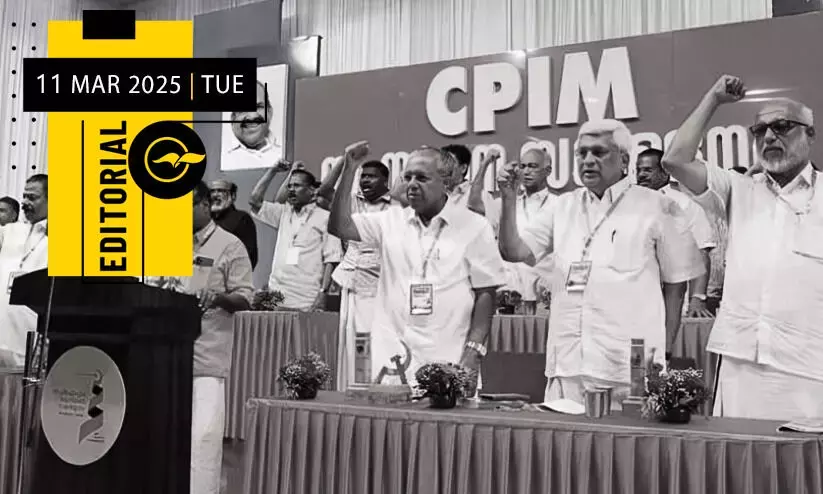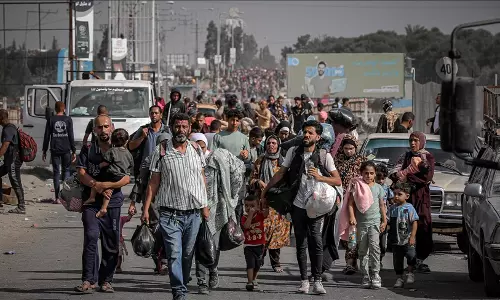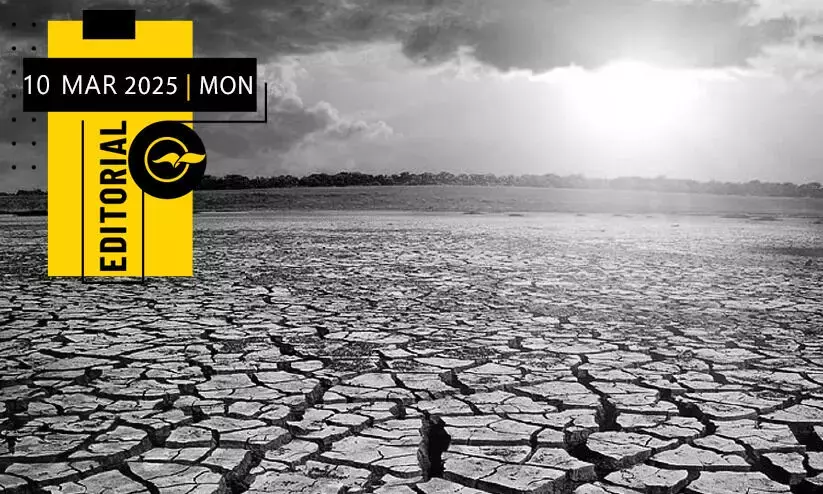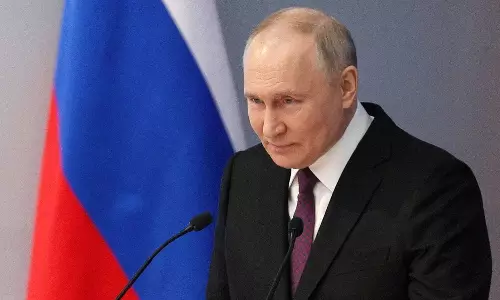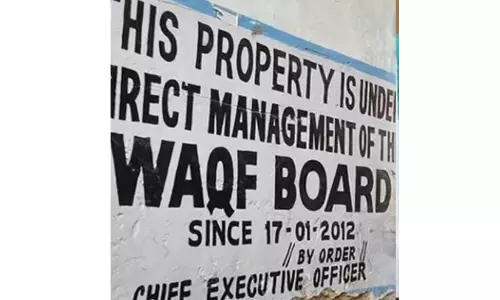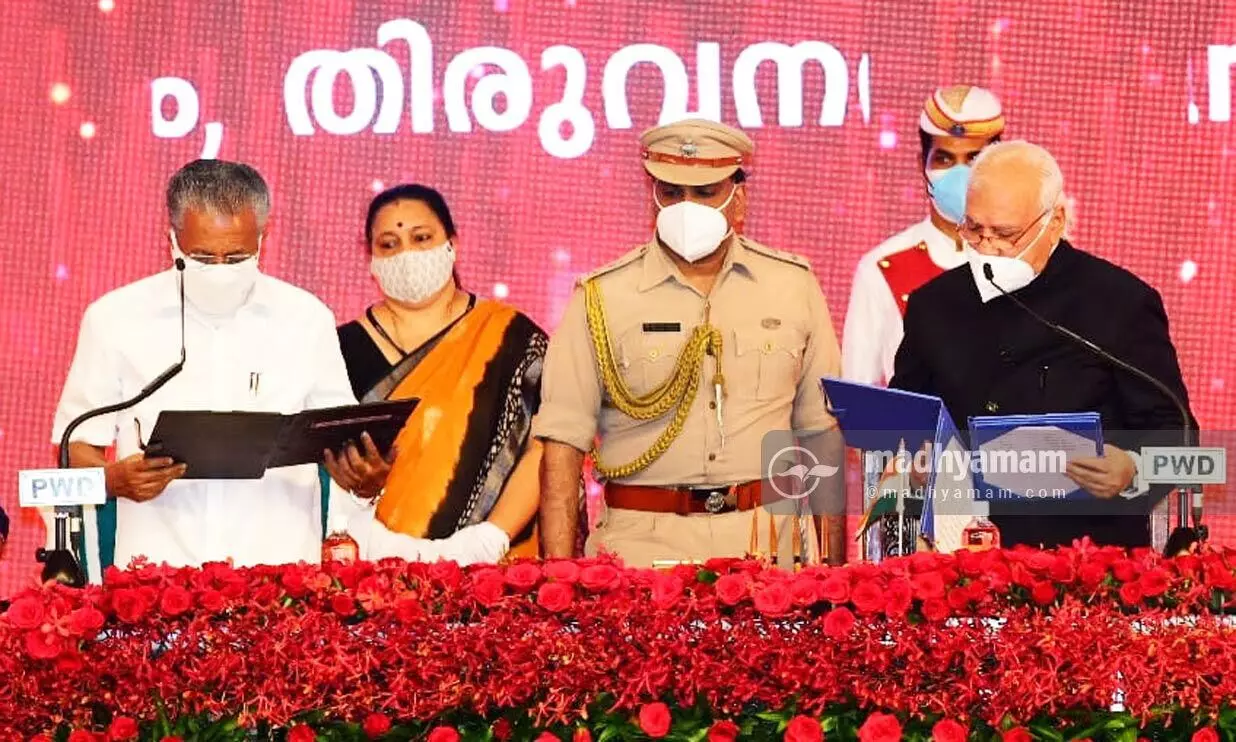
What contributed to Communist Party's return to power in Kerala?
text_fieldsThe victory of the Left Democratic Front (LDF) marks a detour from the state's four-decade-old electoral history of power oscillating between the United Democratic Front (UDF) and LDF. Victory for the Left may create long-lasting repercussions in the electoral politics of the state, the first being the long-term stability of UDF and the other being the role of the BJP in the state.
Setting Up the Mood
The local body elections were the first clue to the continuance of the LDF government. Held amidst the COVID-19 pandemic and fueled by gold smuggling allegations, an incumbent government was able to win big in a local body election for the first time since 1990.
The gold smuggling case which turned out to be a dead horse forced the opposition to revamp their strategy. Strike by PSC rank holders was brought to the forefront by the media and the opposition. The Indian National Congress (INC) tried to bring back the Sabarimala issue to the fore, by proposing in their manifesto a law, making violation of traditions at the shrine a cognizable offence'. The controversy surrounding an alleged deep-sea fishing deal with an American company (EMCC), was one of the most discussed pre-poll issues.
BJP, as usual, pinned their hopes on emotive issues like love jihad conspiracy and Sabarimala women's entry. Just days before the polling, Prime Minister Modi tried to put Sabarimala back into the forefront of the campaign by repeatedly chanting 'Swamiye Saranam Ayyappa' at an election rally.
But the trajectory of the campaign was taken by surprise when the LDF decided not to give tickets to 33 sitting MLAs including five ministers.INC followed suit and gave tickets to scores of fresh faces. What made this election campaign differently was that, unlike previous elections, the narrative didn't revolve around any single issue or agenda set by the opposition.
It was evident that there existed a pro-incumbency wave in favour of the government and opinion polls ratified this. Pinarayi Vijayan stood as the towering figure in the build-up to the election and the opposition failed to project any single leader, calling for 'collective leadership'.
LDF's Success Mantras
♦The changing perception of development
The Pinarayi government distinguished itself from the previous governments in setting a clear-cut agenda and conception on governance and developmental issues. A two-pronged developmental plan was shaped to satisfy the newly emerging middle class and lower rungs of society. The government prioritized and institutionalized the developmental initiatives in four basic spheres of life by introducing four missions. They were: Life Mission (housing scheme), Haritha Keralam(environment conservation), Aardram (Health sector) and Education Rejuvenation Mission. According to a Lokniti-CSDS Survey, more than 60% of the respondents believe that there were improvements in medical facilities in government hospitals, condition of government schools and roads, electricity supply and other public amenities. Moreover, 73% of the respondents were satisfied with the overall performance of the LDF government as against 59% of the previous UDF government.
One of the vantage points for LDF under Pinarayi has been the government's ability to survive the adverse clouds that emerge once a development project is announced. The government was able to breathe life into the National Highway widening and power highway project which were struck in the land acquisition process by scaling up the compensation for land acquired to their market value and ensuring timely payment of compensation. The commissioning of the GAIL(Gas Authority of India Limited) pipeline project, which was discontinued by the previous government due to people's protests, is yet another manifestation of the will and determination to overcome hurdles.
While the Central government sees disinvestment of Public Sector Undertakings(PSU) as a way to amass funds, PSUs in Kerala offer a different picture. Many state PSUs which were in the red five years ago now yield profit.
Pinarayi's tenure also witnessed a paradigm shift in the Left's approach to development. Keeping the core sectors like education, health, infrastructure development and welfare politics on the top priority list, the government incorporated in its policy decisions the needs and aspirations of newly evolved middle classes and youth. By strengthening the IT sector and by initiating state-of-the-art projects like K-FON and K-RAIL and easing the means of doing business, Pinarayi Vijayan was able to break the stereotype of political commissar and caught the imagination of the middle class and swing voters.
♦ Disaster Management and Welfare Measures
Kerala witnessed unprecedented disasters in the past five years. The government was able to transform the crisis into an opportunity to exhibit its administrative capability. Effective crisis management reinforced public faith in the government and the election results reflected it. Strengthening the medical sector by upgrading Primary Health Centres to Family Health Centres under Aardram Mission and modernization of Taluk and District Hospitals was pivotal in the handling of the COVID pandemic.
The most perceptible initiatives of the government were the slew of welfare measures including setting up Kudumbasree Janakeeya hotels, community kitchens, providing food kits, and ensuring systematic distribution of pensions. Lokniti-CSDS survey found that a near-total number (94%) of their respondents had availed of food kits at least once during the past year. The survey also highlighted the shifting in votes of poor and low-income Muslims and Christians towards LDF indicating approval for welfare measures during the pandemic. Food kit along with other initiatives elevated government as a 'super family' that ensured the safety and survival of its people.
♦ KIIFB -the driving force
KIIFB has been the driving force behind the developmental projects of this government. Formed in 1999 during the E. K. Nayanar ministry, KIIFB was revived under the current government. Dr Thomas Isaac, on introducing KIIFB in his 2016 budgetary speech, described it as the second anti-recession package'.
The viability of borrowing hefty sums and the possible financial burden inflicted upon the state raised suspicion from all quarters. But by channelizing a share of the revenue from motor vehicle tax and cess from fuel the government ensured a mode for systematic repayment of loans.
Implementation of Goods and Service Tax (GST) and the central government's inefficiency in distributing GST compensation have pushed states to a severe financial burden. The introduction of KIIFB enables the state government to surpass the borrowing barrier of 4% of the state's GDP and obtain funds from foreign markets. Five years since its initiation, KIIFB has become a household name in the state and the driving force behind infrastructural projects.
♦Brand Pinarayi
For 16 years as the State Secretary of CPI(M), Pinarayi Vijayan was known outside the party circles as a stout communist. Five years since he is the biggest brand in Kerala politics. This is evident from various opinion polls that have consistently rated him as the most preferred chief ministerial candidate by a wide margin. – unique for Kerala which has a history of anti-incumbency by default every five years.
His daily press briefings during the crisis times had the highest TRP for any daily television program in the state and Pinarayi has used this air time to reconstruct his public image too. His well-structured media briefings that unfold l the preparedness in handling a crisis and eventually touching upon every segment of the society, have been instrumental in providing a sense of guardianship in desperate times. People look forward to strong leaders in uncertain times and Pinarayi Vijayan has been effective in handling the responsibilities that gravitated towards him.
A closer look at the verdict
• Change in social demographics
The electorate of the state has been constantly evolving since the rise of the BJP to power at the Centre. With the minorities constituting nearly 45% of the population, anti-BJP rhetoric has been the X-factor in the recent elections.
Minorities have traditionally aligned with the anti-Marxist narrative spearheaded by UDF. But UDF's lethargy in opposing BJP at the Centre and state and its ill-suited political posturing in issues like Babri Masjid judgment and NRC-CAA have altered the traditional voting pattern of the Muslim community. Their handling of Hagia Sophia controversy, love jihad conspiracy and the long-standing feud between Orthodox and Jacobites, and the crossover of Kerala Congress-Mani to LDF had an impact on Christian voters.
The Lokniti-CSDS Post Poll Survey found a 4% increase in minority vote share for LDF to 39%.UDF was able to retain its share of minority voters in Malabar due to the organizational strength of the Indian Union Muslim League (IUML). But in Kochi, UDF saw its Muslim vote share fall drastically. Another significant finding of the Lokniti-CSDS survey was the shift of lower-income Muslims and Christians towards LDF. This can be taken as a positive nod for the welfare measures and handling of the crisis.
Meanwhile, BJP seems to have stabilized its vote share by around 21% in the Hindu community. Half of the votes of the Hindu community have gone to LDF while UDF managed to secure only 25% of this vote. But there is a stark contrast among the preference across castes. More than 60% of OBCs and Dalits prefer the Left while the upper caste votes are more or less equally divided among the fronts.
Analyzing this data points to the twin problems faced by UDF. Minority votes, a lion's share of which has been traditionally favouring them, have been split between LDF and UDF. BJP's growth over the years had been at the expense of both the LDF and UDF, but a significant share seems to have come from UDF. LDF has been able to fill up the lost votes from newly befriended social segments.
• Development prevails over controversies
Accusations and corruption allegations were plenty during the past five years. But there is little evidence that these had a negative impact on voting preference.
The Lokniti-CSDS post-poll survey found that only 30% of respondents consider the LDF government as corrupt, compared to 80% of the previous government. Moreover, 47% of the respondents were unfamiliar with or unsure of these allegations which questions the inefficiency of opposition.
UDF's and BJP's hope to reap dividends out of the Sabrimala issue too fizzled out. NSS General Secretary Sukumaran Nair's appeal to the voters on Sabarimala and the subsequent exchange of words between Chief Minister and opposition leaders on the day of election was aimed at bringing in Sabarimala as a last-ditch weapon, but this seems to have been more a bane than a boon for the opposition.
The Sabarimala issue couldn't find its place in the priority list of voters even though people continued to oppose the entry of women and the government's handling of the issue (Lokniti-CSDS Post Poll Survey). People's mandate conclusively says that emotional and controversial issues were a luxury during the pandemic and it was livelihood that mattered.
• Reading the voter turnout
A discrepancy in the electoral roll was one of the allegations raised by Opposition leader Ramesh Chennithala towards the final phase of the campaign. He accused that there were over 4.34 lakh multiple entries in the electoral roll and blamed it as a conspiracy of LDF. However, the Election Commission of Kerala acknowledged his claim but downsized this number to 38,586 similar entries.
The initial figures published by the ECI showed a decrease in polling by 3.29% from 77.35% to 74.06% leading to speculations. UDF attributed the decrease in polling percentage to the 4 lakh odd votes that were frozen after Chennithala's expose. The LDF argued that almost all of their votes had been polled and it was the non-committed, pro-UDF votes and the non-resident votes that were uncast.
The final polling percentage after accounting for postal ballots stood at 75.94%, just 1.41% short of 2016. Moreover, 7.18 lakhs more votes were polled as compared to the previous election. These figures prove Chennithala's allegation to be baseless. The credibility of his allegation was questionable from the start as the names of family members of several Congress leaders including Chennithala himself had multiple entries in the electoral roll. What would have gone down as an administrative error was blown beyond proportion and Chennithala ended up shooting himself in the foot.
Analyzing the polling percentage, it is evident that 33 constituencies recorded an increase in voting. Of these only 13 were won by the UDF and 20 went to the LDF. Among the 13 seats won by UDF, 9 are in IUML strongholds and 2 were sitting seats of Kerala Congress, where LDF put up a much better show compared to 2016. Vadakara (UDF-backed candidate) and Karungapalli (INC) were wrested from LDF mostly owing to constituency-specific reasons. The LDF won the remaining 20 constituencies which were their sitting seats. This is against the commonly held notion that increased polling benefits UDF.
Out of the 107 constituencies which recorded a decrease in polling compared to 2016, 79 were won by LDF and 28 by UDF. Consider a hypothetical situation that all these unpolled votes in these 107 constituencies were from UDF's kitty. Even on adding these unpolled votes to UDF's account, only eight seats- Kuttiady, Nilambur, Tanur, Thrissur, Kunnathunadu, Idukki, Kuttanad, and Ranni would have switched from LDF to UDF. This reiterates the fact that the drop in polling percentage had no bearing on the overall outcome of this election.
What lies ahead
LDF has cut the Gordian knot with this victory. The outgoing LDF government has kept its benchmarks high and the upcoming government should remain committed to them. . Perhaps it's the time for Generation X in the CPM to take over. But the immediate concern would be taming the COVID pandemic and bringing the developmental projects back on track while staying clear of controversies.
UDF failed miserably in reading the pulse of the electorate. Staying out of power for two consecutive terms is likely to raise questions as to the existence of UDF in its present form as their politics have always revolved around the locus of power. UDF being a loosely knit agglomeration, its leadership may find it difficult to hold together its constituents. For the INC, the remedy for the current debacle lies not just in generational transition in its leadership but also in strengthening the party from the grassroots.
For BJP, which had hoped to rope in the discontented elements following the election, the results were a reality check. The verdict offers them two probable paths for the future. The first, continue aggressively with its divisive politics, which was tried to an extent in Kerala. The realization that Kerala is not yet fertile ground for this brand of politics, and an understanding of the diverse social demographics of Kerala may bring about a relook in their strategies. Second, by taking a right-of-centre position in the political spectrum they can create a platform for accommodating any possible deserters from the UDF.
Kerala has been an outlier from the rest of India in most aspects. So has it been in accommodating the politics of BJP? But only time can tell what the future holds for the coalition politics of Kerala. The outcome at the national level of general elections of 2024will provides the first clue of any probable changes in the State's political formations.


